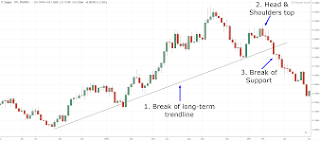Dollar remains pressured in European session on the back of improved investors sentiments following strong rally in Asian and European stock markets. The dollar index fell sharply to as low as 85.73 before recovering mildly. As mentioned before, recent price actions in the dollar index is probably developing into a head and shoulder top reversal pattern (ls: 87.87, h: 88.46, rs: 87.68). Focus remains on the neck line support (now at 85.58). Sustained break of which will add much credence to the case that the whole rally from 71.31 has topped out. Further break of 83.11 support will confirm this case and bring medium term correction towards 50% retracement of 71.31 to 88.46 at 79.88. However, note that strong rebound from the neckline support, followed by 87.68 resistance will invalidate this scenario and retain dollar’s short term bullish outlook. Main focus will turn to development in the US stock markets and its reactions to US president-elect Obama’s public works program as well as news on rescue of automakers in the US.
Dollar Index 4 Hours Chart – Forex Education, Forex Course, Forex Tutorial, Forex eBooks, Forex Training
Several economic data were released in European morning. In the Eurozone, the Sentix investor confidence index hit 6-year low at -42.3 in December, significantly worse than market expectation of -40 and last month’s -36.4. Fear of recession, declines in orders and increase in unemployment were the main causes for the sharp fall. Germany’s industrial production in November dropped a seasonally adjusted 2.1% MoM, worst than market expectation of -1.5% and October’s revised -1.5%. this month’s was brought by tumble of investment goods such as plant and machinery.
UK’s PPI dropped in November on the back of falling oil price. Input PPI fell 3.3% MoM, compared with a revised -4.3% in October while output PPI declined 0.7% MoM, within market expectation buy lower than 1% plunge in October. On annual basis, input and output PPI rose 7.5% and 5.1%, respectively. Core PPI rose 0.2% monthly and 5.1% yearly. Receding inflationary pressure make it more justifiable for the BoE to cut interest rate in the next meeting.
Earlier in Asia, Japan’s economic watch DI for November came down to 21 from 22.6 in October but was slightly higher than consensus of 20. Current account surplus in October dropped sharply to 960.5B yen from 1497.9 B yen in October, worse than consensus of 1094 B yen. The 8th consecutive decline was brought by 7.3% decrease in exports to 6.59 trillion yen and 8% increase in import to 6.45 trillion yen. Geographically, Japan’s exports to the US were down 19% while that to the EU was down 17.2%.
اكتشاف المزيد من موقع استشارات - مال واقتصاد وتقنية واجتماعيات
اشترك للحصول على أحدث التدوينات المرسلة إلى بريدك الإلكتروني.


